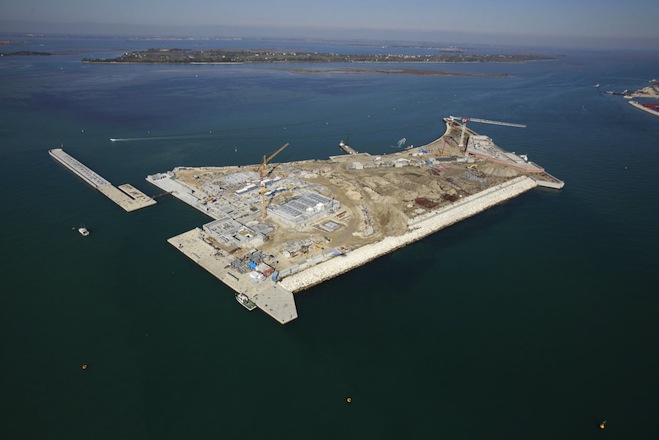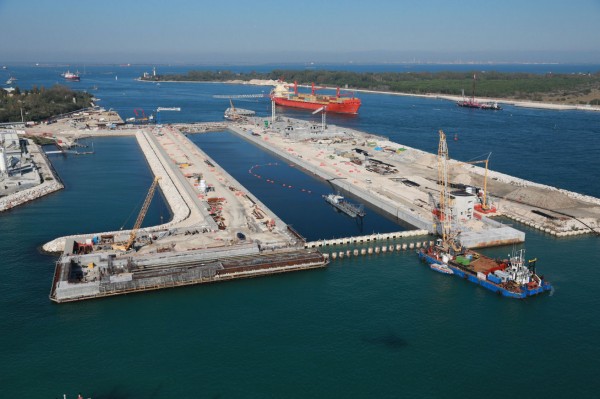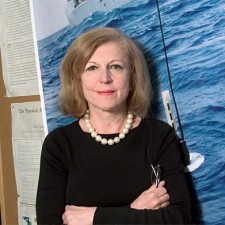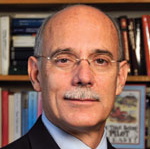Featured Stories, MIT | November 2, 2012
Saving Venice
By Kenrick Vezina
It’s the season of high water in Venice. Just a couple days ago, tides were 3.5 feet above normal, inundating two-thirds of the city and forcing residents and tourists alike to use raised walkways. Venice is the frequent target of Adriatic Sea storm surges. One MIT’s Prof. Paola Rizzoli of the Program in Atmospheres, Oceans, and Climate, a Venetian herself, has experienced this flooding first hand. How do you keep one of Western culture’s most treasured cities from sinking when the forces of geology and climate are marshaled against you?

Rizzoli has long supported the MOSE project, overseen by Consorzio Venezia Nuova. It is an unparalleled engineering effort meant to shield Venice and other cities of the Venetian lagoon from the acqua alta (“high water”) that has increasingly plagued the region over the last decade. The crux of the project are mobile barriers attached to cassoons on the ocean floor which can be raised or lowered as needed to block the influx of seawater. Four barriers are planned. One inlet—the Lido inlet—is too wide for a single closure, and an artificial island has been constructed in the center, surrounded by two of the mobile closures.
“Our MIT group has been instrumental in getting the MOSE project through the constraints imposed both by the Italian and the European regulations for this type of project,” says Rizzoli.
The MIT-Italy Program hosted a conference in April of this year, where two representatives of the Consorzio Venezia Nuova presented the latest news from the project. But MIT’s relationship with the project began much earlier when a group chaired by Prof. Rafael Bras, former head of Civil and Environmental Engineering (CEE) began consulting on an initial environmental impact assessment for the project in 1995. The group included Prof. Donald Harleman in CEE, and Rizzoli herself. They were joined by Prof. Andrea Rinaldo from the University of Padua.
In the 17 years since, says Rizzoli, much has changed. Harleman passed away, Rinaldo had to resign due to a conflict of interest, and Bras has become Provost of the Georgia Institute of Technology. “Of the original group, Prof. Bras and myself are still consulting for CVN.” They have been joined by MIT faculty Prof. Andrew Whittle, present head of CEE, and Prof. David Parks of Mechanical Engineering. “We have about three meetings a year in Venice,” says Rizzoli, “and have been following all of the engineering details of the construction … from the cassoons on which the mobile gates will be installed to the mechanical details of the hinges connecting them.”

Bras, who has chaired the project’s advisory panel in various forms for more than a decade, wants to ensure that credit is given where credit is due. “Although the panel I have chaired … has always included a large number of MIT people,” he said in an email, “this is not and has never been an MIT project.” Indeed, “the panel has always included people from other institutions.”
Yet, Rizzoli has remained dedicated to the MOSE project for its potential to protect the treasures stored in museum basements, palace walls, family homes, and tourism in her hometown. Despite political pitfalls and budgetary concerns, the project has forged onward. Currently, the gates are expected to be fully operational by 2016.
On October 5, Rizzoli was present at an opening ceremony for the Treporti cassoons, which have now all been successfully installed and are submerged underwater. “Installation of the mobile gates connected to them is starting now,” says Rizzoli. Looking to the future, there’s undeniable pride in Rizzoli’s words: “The MOSE project is the biggest engineering enterprise of this kind presently being constructed.” Fitting, then, that MIT’s engineers and oceanographers should offer a guiding hand.







